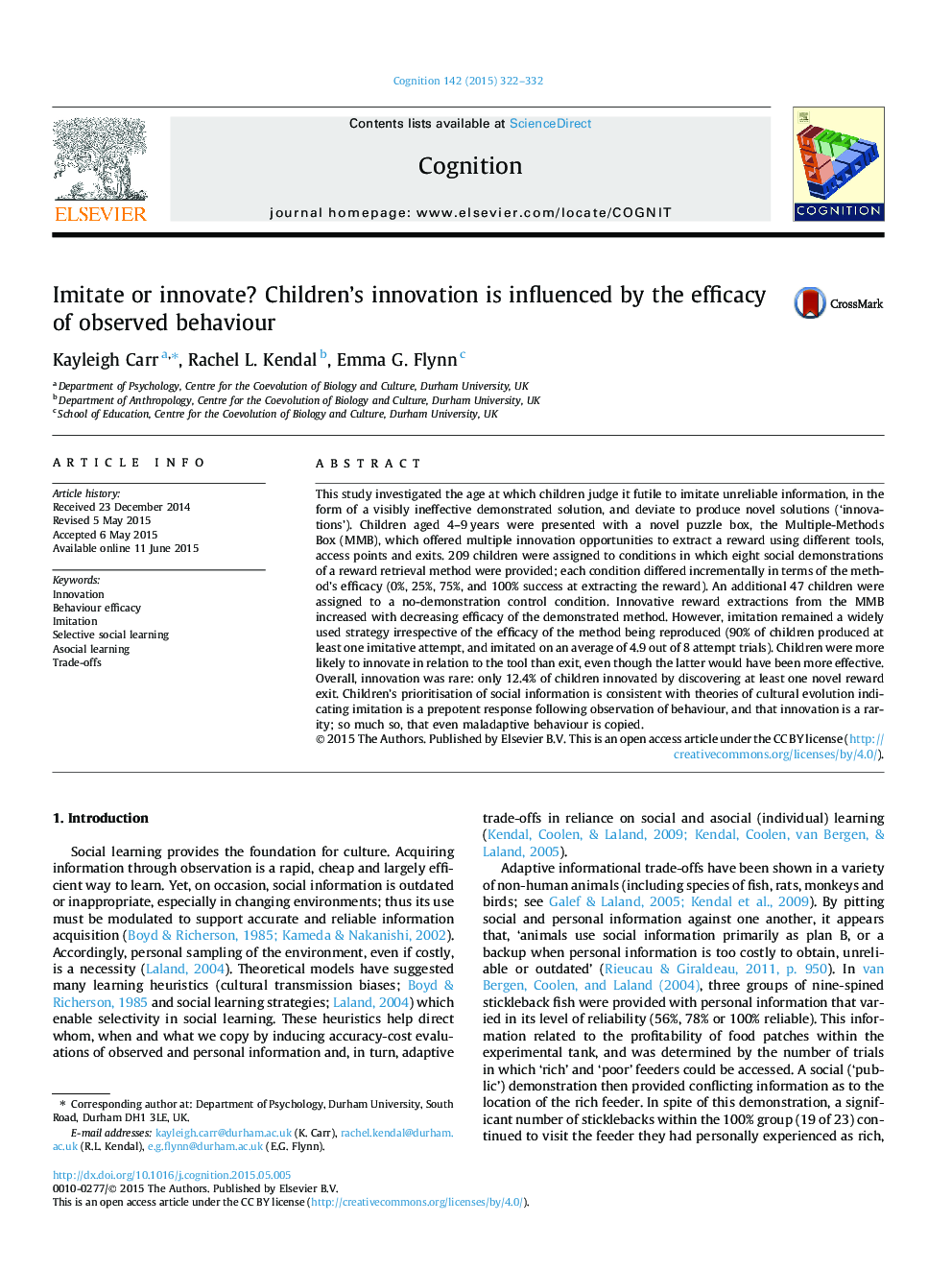| Article ID | Journal | Published Year | Pages | File Type |
|---|---|---|---|---|
| 7286864 | Cognition | 2015 | 11 Pages |
Abstract
This study investigated the age at which children judge it futile to imitate unreliable information, in the form of a visibly ineffective demonstrated solution, and deviate to produce novel solutions ('innovations'). Children aged 4-9Â years were presented with a novel puzzle box, the Multiple-Methods Box (MMB), which offered multiple innovation opportunities to extract a reward using different tools, access points and exits. 209 children were assigned to conditions in which eight social demonstrations of a reward retrieval method were provided; each condition differed incrementally in terms of the method's efficacy (0%, 25%, 75%, and 100% success at extracting the reward). An additional 47 children were assigned to a no-demonstration control condition. Innovative reward extractions from the MMB increased with decreasing efficacy of the demonstrated method. However, imitation remained a widely used strategy irrespective of the efficacy of the method being reproduced (90% of children produced at least one imitative attempt, and imitated on an average of 4.9 out of 8 attempt trials). Children were more likely to innovate in relation to the tool than exit, even though the latter would have been more effective. Overall, innovation was rare: only 12.4% of children innovated by discovering at least one novel reward exit. Children's prioritisation of social information is consistent with theories of cultural evolution indicating imitation is a prepotent response following observation of behaviour, and that innovation is a rarity; so much so, that even maladaptive behaviour is copied.
Keywords
Related Topics
Life Sciences
Neuroscience
Cognitive Neuroscience
Authors
Kayleigh Carr, Rachel L. Kendal, Emma G. Flynn,
